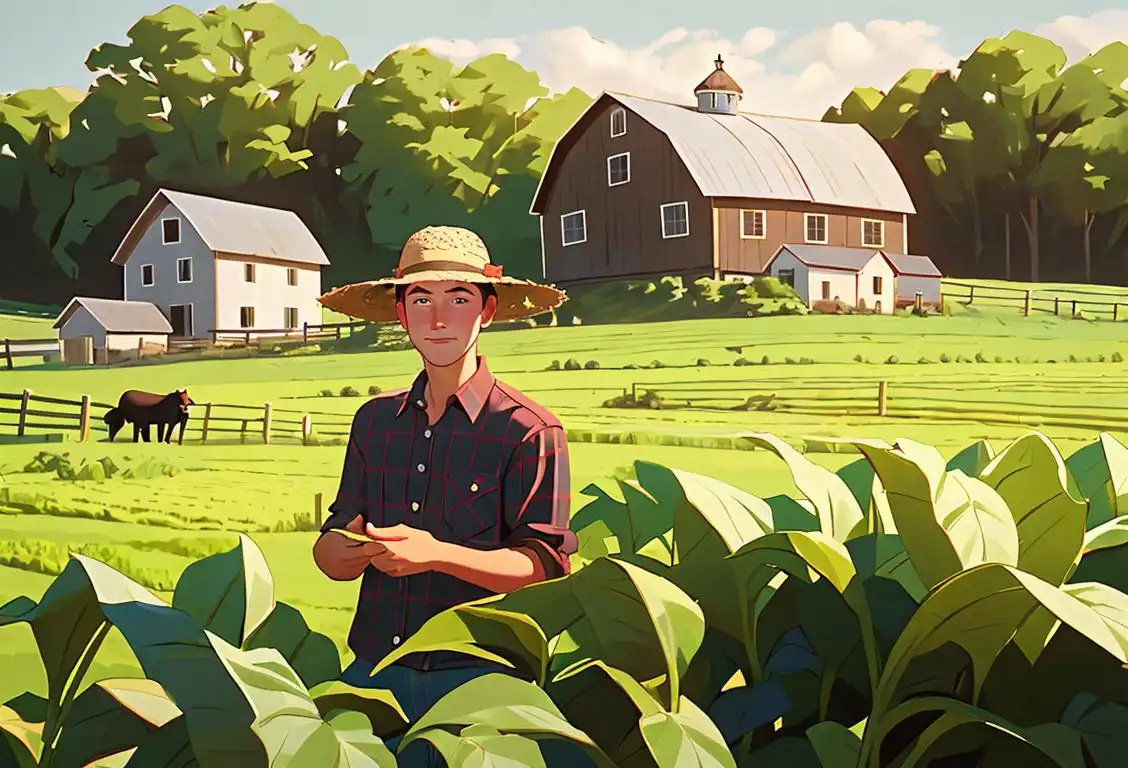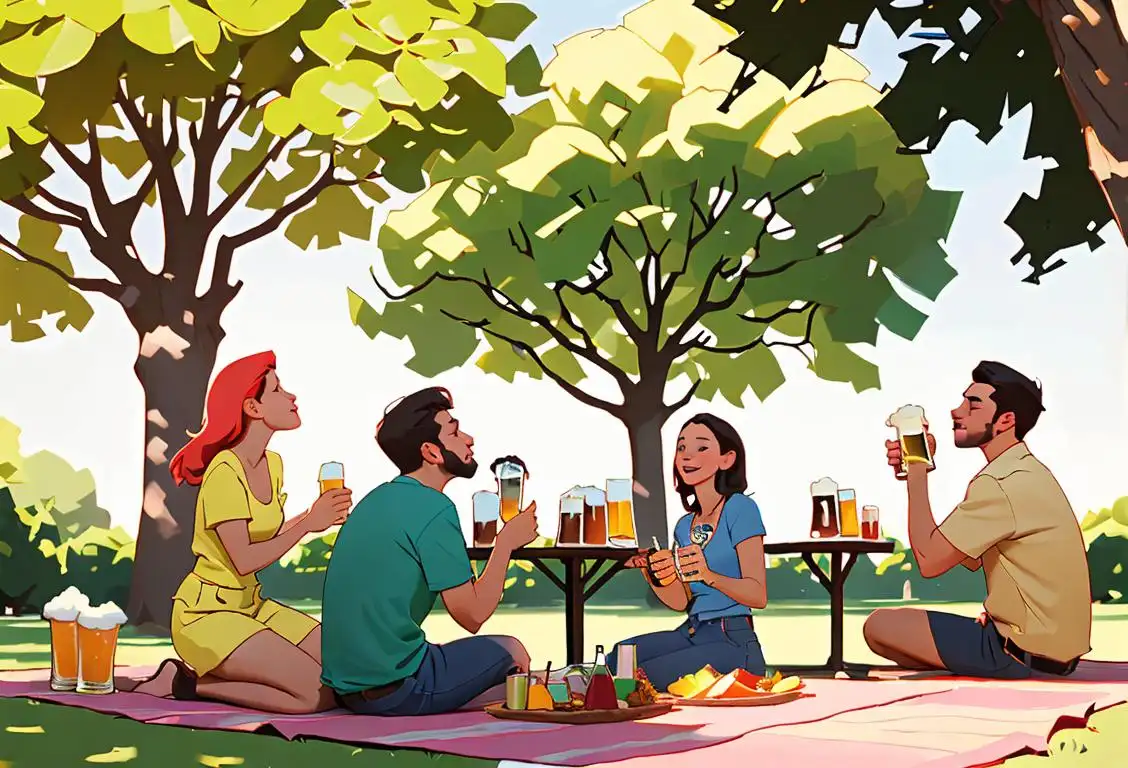National Sugar Day

Welcome to the sweetest day of them all - National Sugar Day! Get ready to indulge in all things sugary, because on this special day, calories don't count (at least, that's what we tell ourselves). From candy to cakes, and from cookies to caramel, it's time to satisfy your sweet tooth and embrace the sugar rush!
When is Sugar Day?
It's national sugar day on the 23rd June.
The Origins of National Sugar Day
While National Sugar Day may not have a long and storied history like some other national days, it has quickly become a favorite among dessert enthusiasts and sugar lovers everywhere. The idea behind this tasty celebration is simple – to appreciate the wonders of sugar in its many forms and the joy it brings to our lives.
Whether you're a fan of chocolate, marshmallows, or a spoonful of sugar in your coffee, everyone has a special relationship with this sweet ingredient. National Sugar Day is the perfect opportunity to embrace that relationship and indulge in the sugary goodness that makes life a little bit sweeter.
Celebrating National Sugar Day
Celebrating National Sugar Day is as easy as eating a piece of cake (literally). Here are a few ways you can join in on the sugary fun:
- Visit a local bakery or dessert shop and treat yourself to your favorite sugary delicacy. Don't be shy – go for the double chocolate fudge cake with extra sprinkles!
- Get creative in the kitchen and bake your own sugary masterpiece. Whether it's cookies, brownies, or a fancy dessert you saw on Instagram, let your inner baker shine.
- Host a sugar-themed party with your loved ones. Have a dessert buffet with an assortment of delicious treats and challenge your friends to a cupcake decorating contest.
- Share the sweetness. Donate to a local charity that supports those with a sweet tooth, or surprise a friend with a box of their favorite candies.
Did You Know?
Did you know that sugar was once considered a luxury? Back in the 18th century, sugar was so expensive that only the wealthy could afford to enjoy its sweet taste. Thankfully, today we can all indulge in the sweetness of sugar without breaking the bank (or the scales).
History behind the term 'Sugar'
4000 BCE
Discovery of Sugarcane
Sugarcane, the tropical grass used to produce sugar, is believed to have been discovered around 4000 BCE in New Guinea.
3000 BC
Ancient Origins
Sugar has its roots in ancient times, dating back to around 3000 BC. The term began to emerge when sugar cane, the primary source of sugar, was first cultivated in Papua New Guinea. The locals discovered that by chewing the stalk of the sugar cane, they could extract a sweet juice, a precursor to what we now know as sugar.
8000 BCE
The Discovery of Sugarcane
The origins of sugar can be traced back to ancient times, around 8000 BCE, when sugarcane was first discovered in New Guinea. The local inhabitants realized that by chewing on the sweet stalks, they could extract a delicious and energizing juice. The use of sugarcane quickly spread across Southeast Asia and India, where it became an essential part of their cuisine and medicinal practices.
510 BCE
The discovery of sugar cane
Around 510 BCE, the term 'sugar' finds its roots in the discovery of sugar cane. Sugar cane, which originated in New Guinea, was cultivated and utilized for its sweet juice.
327 BCE
Introduction to sugar in India
In 327 BCE, the term 'sugar' made its way to India through the Persian Empire. Indian traders began refining sugar cane juice into granulated crystals, known as Khanda, which was used primarily for medicinal purposes and as a luxury item.
500 BCE
Sugarcane Cultivation in India
Sugarcane cultivation started in India around 500 BCE. The practice of extracting juice from sugarcane and crystallizing it into sugar began in this period.
600 AD
Spread of Sugarcane Cultivation
In the 7th century AD, sugarcane cultivation spread to India and the process of refining sugar from the cane juice began. This marked a significant step in the history of sugar, as the Indians invented methods to crystallize the cane juice, producing the granulated sugar we are familiar with today.
500 BCE
Sugarcane Cultivation in Persia
Persia (modern-day Iran) played a crucial role in shaping the history of sugar. Around 500 BCE, Persians began cultivating sugarcane on a large scale, establishing the first commercial sugarcane plantations. They developed advanced irrigation systems, which enabled the successful growth of this versatile crop. Persians further refined the art of extracting sugar from sugarcane by inventing a crude form of sugar refining known as 'sugar boiling.' This technique involved boiling sugarcane juice until crystals formed, creating raw sugar.
1100 AD
Arab Influences
During the medieval period, the Arab world played a pivotal role in the further development and spread of sugar. Arab traders introduced sugarcane cultivation to regions such as North Africa, Spain, and Sicily. They also discovered new methods to extract sugar from sugar beets, expanding the sources of this sweet substance.
6th century CE
Spread of sugar production
During the 6th century CE, Arab traders introduced the cultivation and production of sugar cane to the Mediterranean region. The term 'sugar' gained prominence as sugar was widely produced in regions such as Egypt, Syria, and Cyprus.
300 BCE
Sugarcane Reaches the Mediterranean
Sugarcane finally made its way to the Mediterranean region around 300 BCE. The Greek philosopher and historian, Theophrastus, documented its arrival and praised its sweetness. The Mediterranean climate proved favorable for growing sugarcane, leading to its cultivation in countries such as Egypt, Cyprus, and Sicily. Despite its popularity, sugar remained a luxury item mainly reserved for the wealthy due to its scarcity and labor-intensive production process.
7th Century
Introduction of Sugar to Europe
Sugar made its way to Europe through the Muslim conquests in the 7th century. Arab traders brought sugarcane and the knowledge of sugar production to the region.
15th Century
Sugar Production in the New World
In the 15th century, sugar production was introduced to the New World by Christopher Columbus. The ideal climate and fertile soil in areas such as the Caribbean made it perfect for cultivating sugarcane.
1500s
Colonial Expansion and the Sugar Trade
With the colonization of the Americas, sugar production took a massive leap forward. European powers established vast sugarcane plantations in the Caribbean, especially in Brazil and the West Indies. The labor-intensive nature of sugarcane cultivation led to the transatlantic slave trade, as enslaved Africans were forcefully brought to work on these plantations. This era marked a turning point in the global sugar industry.
800 CE
Introduction of Sugar to Europe
The Arab conquest of Spain in the 8th century brought sugar to Europe. The Moors, who were skilled in the art of sugar production, established the first sugar plantations in Spain, Portugal, and eventually in Sicily. Over time, the demand for sugar grew, and it became a highly sought-after commodity among European elites. The Crusaders also played a significant role in introducing sugar to the rest of Europe during their travels in the Holy Land.
12th century CE
European encounter with sugar
In the 12th century CE, Crusaders returning from the Middle East brought sugar to Europe. The term 'sugar' became more widely known and its popularity grew among the European elite. However, sugar remained a luxury item, exclusively available to the wealthy.
16th century CE
Sugar in the New World
The 16th century CE marked a significant shift in sugar production with the colonization of the Americas. European settlers introduced sugar cane plantations in the Caribbean and Latin America, heavily relying on enslaved Africans for labor. This period saw the term 'sugar' undergo a dramatic increase in production, making it more accessible to the general population.
18th Century
Industrialization of Sugar Production
The 18th century witnessed the industrialization of sugar production. Machinery, such as steam-powered mills, were invented to process sugarcane, making it more efficient to extract sugar. This technological advancement contributed to increased production and affordability, leading to a rise in sugar consumption worldwide.
17th Century
Sugar Plantations and Slavery
With the increased demand for sugar in Europe, large-scale sugar plantations were established in the Americas. This led to the expansion of the transatlantic slave trade as enslaved people from Africa were brought to work on these plantations.
1493
Sugar Arrives in the New World
The arrival of Christopher Columbus in the New World in 1493 marked the introduction of sugarcane to the Americas. Columbus brought sugarcane seedlings to the Caribbean island of Hispaniola (now Haiti and the Dominican Republic). The tropical climate and fertile soil of the Caribbean proved ideal for sugarcane cultivation. Over the next few centuries, sugar plantations spread across the Caribbean, Central, and South America, leading to the establishment of lucrative sugar industries.
18th century CE
Industrial revolution and refined sugar
With the advent of the industrial revolution in the 18th century CE, the process of sugar production underwent significant advancements. The term 'sugar' began to refer to refined sugar, separating it from other sweeteners like honey and molasses. Refined sugar became a staple in many households, transforming diets and driving the growth of sugar-related industries.
18th Century
Industrialization of Sugar Production
The 18th century saw the industrialization of sugar production, with the development of steam-powered mills and refining techniques. This led to a significant increase in sugar production and availability.
18th Century
Sugar's Role in the Transatlantic Slave Trade
The demand for sugar in Europe and the Americas during the 18th century fueled the growth of the transatlantic slave trade. Enslaved Africans were forcibly brought to the sugar plantations to provide labor for the backbreaking tasks involved in sugarcane cultivation and sugar processing. The Transatlantic Slave Trade not only shaped the economic landscape but also had a lasting impact on the societies and cultures of the New World.
19th Century
Sugar Refinement and Crystallization
In the 19th century, chemical advancements propelled sugar refinement further. The methods of purifying and crystallizing sugar were refined, resulting in the production of white sugar, which became highly sought after. It became a symbolic product of the British Empire, and its popularity continued to grow.
19th Century
The Rise of Sugar Consumption
During the 19th century, sugar consumption skyrocketed as it became more affordable and readily available. It was used not only as a sweetener but also in the production of various processed foods and beverages.
19th Century
Industrial Revolution and Sugar Refining
The 19th century brought significant advancements in sugar refining techniques. The Industrial Revolution revolutionized the sugar industry by introducing steam-powered machinery and refining processes that improved efficiency and increased sugar production. This technological progress made sugar more affordable and accessible to the general population, contributing to a widespread sweet tooth and the emergence of confectionery industries around the world.
20th century CE
Sugar in popular culture
By the 20th century CE, the term 'sugar' became deeply ingrained in popular culture. Sweet treats, desserts, and sugary beverages became widely consumed, leading to concerns over the health implications of excessive sugar consumption.
20th Century
Sugar Beet Revolution
In the early 20th century, the sugar beet revolutionized sugar production. Sugar beets, a root crop, became an essential source of sugar, complementing the traditional use of sugarcane.
20th Century
From Cubes to Global Consumption
With the introduction of refined sugar cubes in the early 20th century, sugar consumption experienced a significant shift. Cubes made it easier for individuals to measure and control the amount of sugar used in their daily lives. As sugar production expanded globally, it also became a key ingredient in various processed foods and beverages, leading to increased concerns about the impact of excess sugar consumption on health.
21st Century
Diversification of Sugar
In the 21st century, the demand for alternative sweeteners and concerns about the health effects of excessive sugar consumption have prompted the development of various sugar substitutes and alternative sweetening options.
Did you know?
Did you know that sugar was once considered a luxury? Back in the 18th century, sugar was so expensive that only the wealthy could afford to enjoy its sweet taste. Thankfully, today we can all indulge in the sweetness of sugar without breaking the bank (or the scales).Tagged
food fun loved onesFirst identified
23rd June 2015Most mentioned on
23rd June 2015Total mentions
6Other days
Biscuit Day
Cheese Lovers Day
Cheese Pizza Day
Agriculture Day
Bacon Day
Medal Of Honor Day
Pumpkin Day
Foundation Day
Guac Day
Drink A Beer Day









